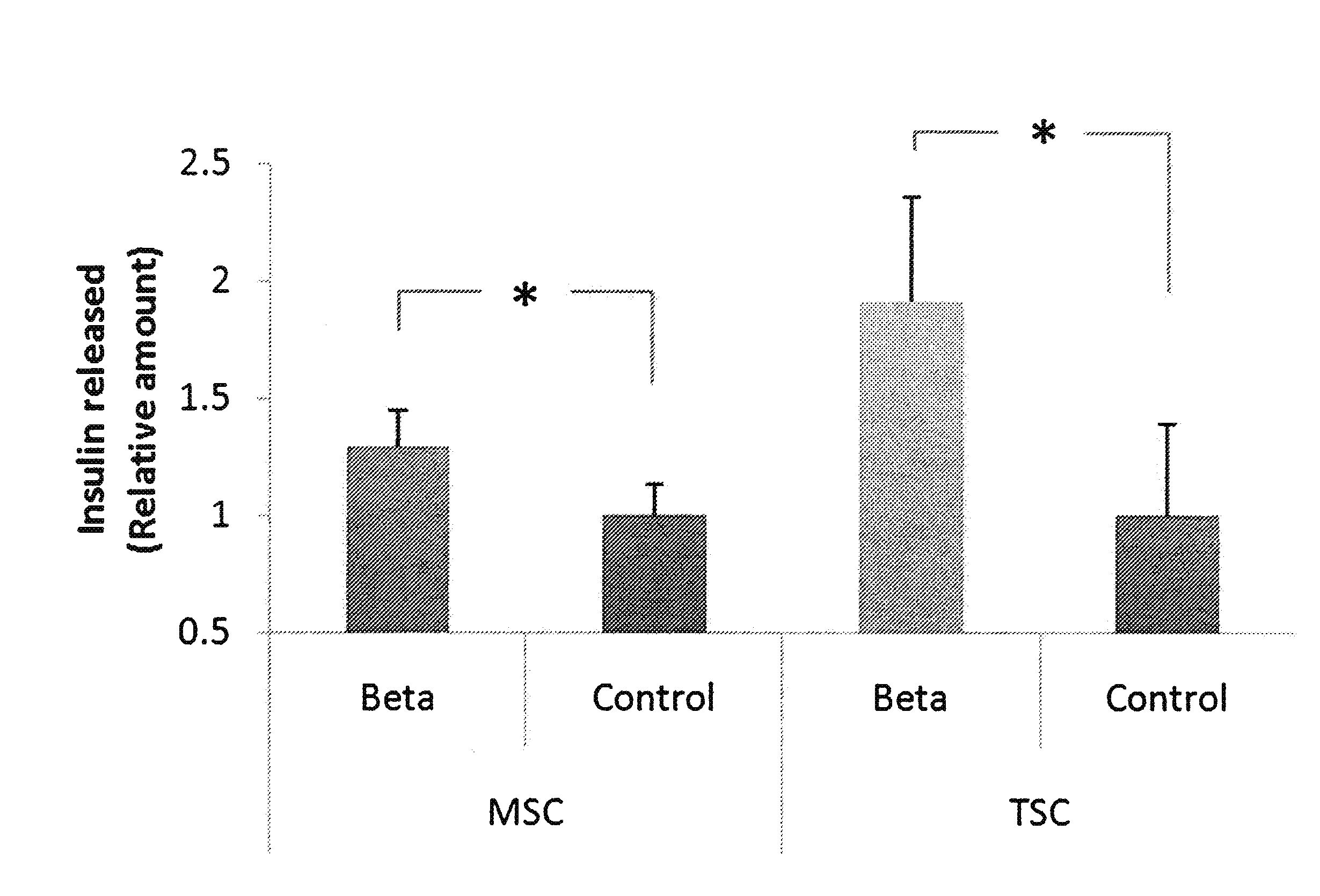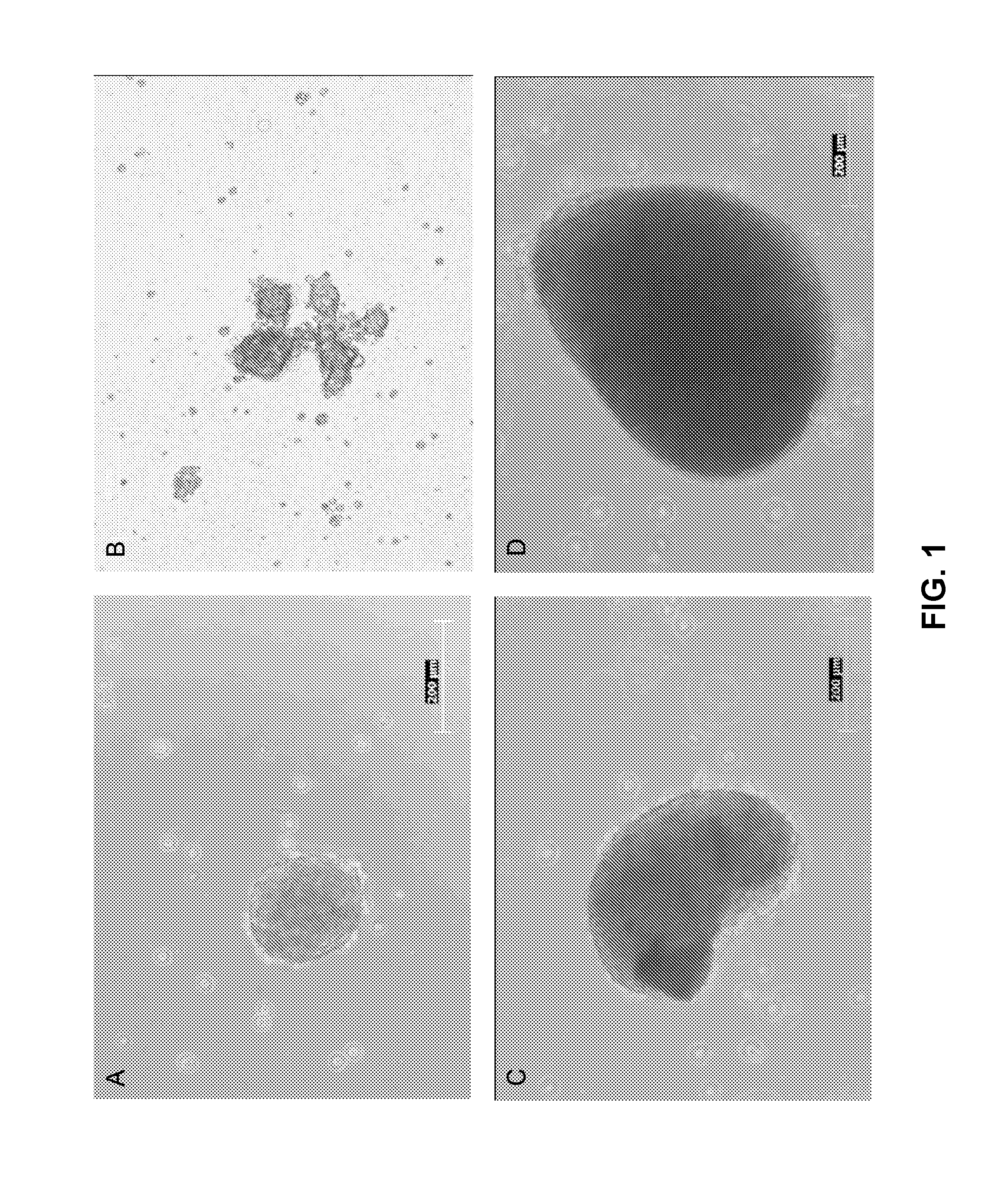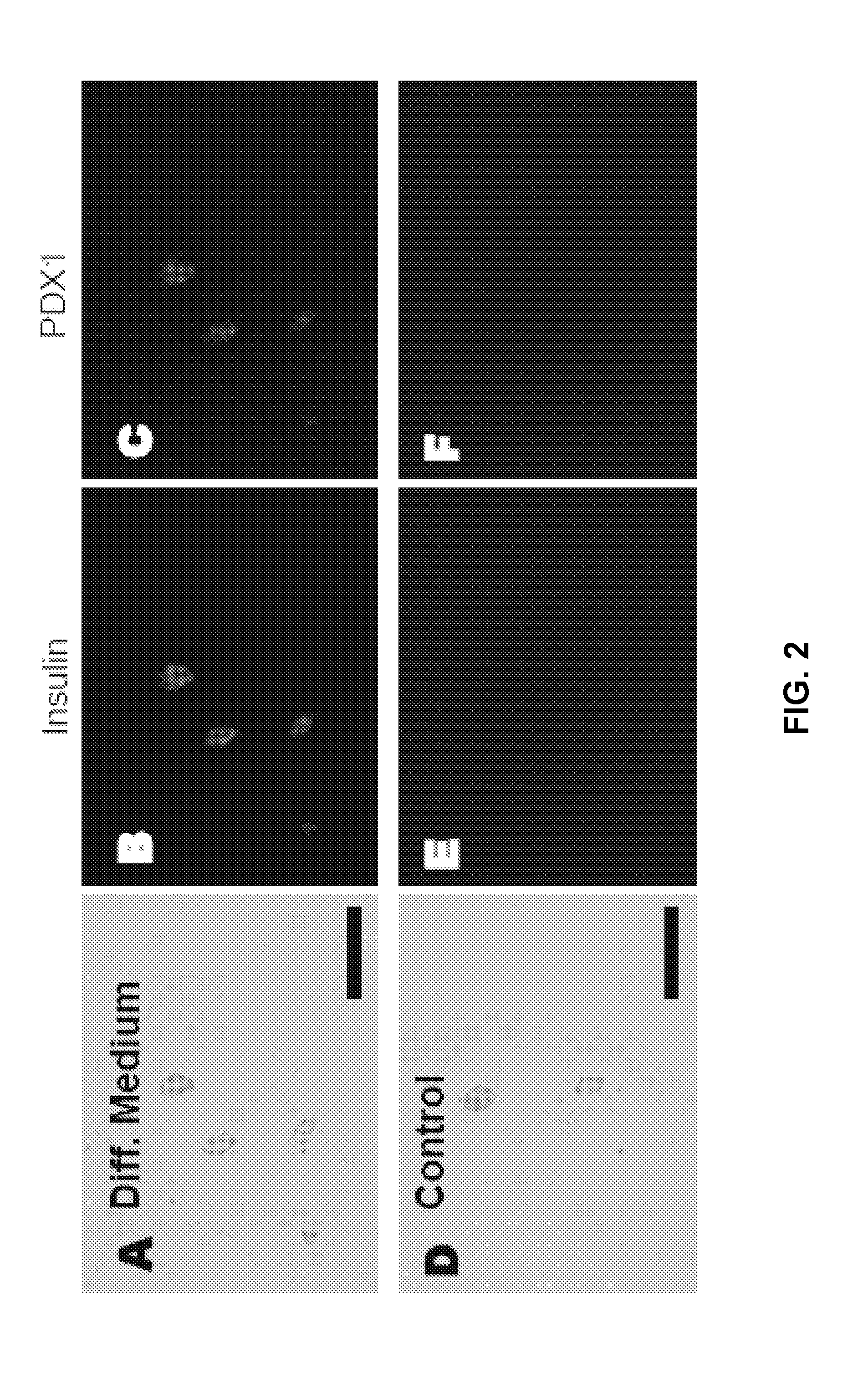Dental stem cell differentiation
- Summary
- Abstract
- Description
- Claims
- Application Information
AI Technical Summary
Benefits of technology
Problems solved by technology
Method used
Image
Examples
example 1
Differentiation of Dental Stem Cells into Pancreatic Beta Cells, Myocytes, Hair Follicle Cells and Chondrocytes
[0061]Deciduous teeth were extracted under sterile conditions from healthy children with an age range of 5-7 years in the Pediatric Dentistry Clinic of Columbia University Medical Center, under IRB approval and following informed consent procedures. The extracted deciduous teeth were transported under sterile conditions to the research laboratory and immediately processed. The pulp tissue of the deciduous teeth was removed by mechanical passaging and further digested with collagenase (Alhadlaq and Mao, 2004; Marion and Mao, 2006). The isolated mononucleated cells (FIGS. 1A, B) showed rapid proliferation rates in comparison with bone marrow derived mesenchymal stem cells (MSC) and adipose stem cells (ASC) as described by Alhadlaq and Mao (2004) and Marion and Mao (2006).
[0062]For differentiation into beta cells, 300,000 cells / mL of DSCs were plated in ultra-low attachment 6-...
example 2
Insulin-Producing Cells (IPCs) from Dental-Pulp Stem / Progenitor Cells
[0066]This Example was presented as an abstract at the 2008 Tissue Engineering and Regenerative Medicine International Society (TERMIS) meeting, Dec. 7, 2008.
Introduction.
[0067]Example 1 describes the isolation of DSCs from human deciduous and adult teeth, and their multi-lineage differentiation capacity into pancreatic beta-like cells, chondrocyte-like cells, and myocyte-like cells and hair follicle-like cells. The differentiation of polyclonal and monoclonal DSCs into insulin-producing cells (IPCs) is further described herein, using media differing from that used in Example 1. The DSC clones were differentiated into endoderm pancreatic cells and critical markers associated with IPC differentiation were characterized.
Methods and Materials
[0068]Subjects and Cell Culture. Exfoliating deciduous incisors and permanent third molars of multiple donors were collected with IRB approval. The dental pulps were isolated and ...
example 3
Culture of Dental Stem Cells
[0073]DSC isolation. Following IRB approval, deciduous teeth from multiple donors (FIG. 10a), were extracted in the dental clinics of Columbia University College of Dental Medicine at the time of exfoliation. The dental pulps were then digested with type I collagenase (2 mg / ml) and dispase (1 mg / ml) for 2 hr. The cells were plated into the type I collagen coated 10 cm cell culture dishes. Following medium change, mononucleated, adherent cells were re-plated (FIG. 10b). Single cell clones (FIG. 10c) were derived from the heterogeneous population (e.g., FIG. 10b), as described in Alhadlaq and Mao, 2004 and Marion and Mao, 2006. Two clonally expanded cell subpopulations are evident in FIG. 10c. Different clones behaved rather differently in population doubling time and differentiation capacity. Heterogeneous DSCs showed positive expression of Oct-3 / 4, Nanog and Sox2 (FIG. 10d-f, j-l, m-o), which are hallmarks of embryonic stem cells, as well as Stro1, a mese...
PUM
| Property | Measurement | Unit |
|---|---|---|
| Content | aaaaa | aaaaa |
| Inhibition | aaaaa | aaaaa |
Abstract
Description
Claims
Application Information
 Login to View More
Login to View More - R&D
- Intellectual Property
- Life Sciences
- Materials
- Tech Scout
- Unparalleled Data Quality
- Higher Quality Content
- 60% Fewer Hallucinations
Browse by: Latest US Patents, China's latest patents, Technical Efficacy Thesaurus, Application Domain, Technology Topic, Popular Technical Reports.
© 2025 PatSnap. All rights reserved.Legal|Privacy policy|Modern Slavery Act Transparency Statement|Sitemap|About US| Contact US: help@patsnap.com



